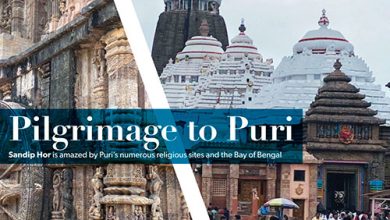POCKET POWERHOUSE
Wish you were here
The world’s richest nation
Sandip Hor visits Luxembourg and takes in the historical sites along with quaint vistas
Though small in size, Luxembourg ranks towards the top of the list of the world’s richest nations. It is located in the heart of Europe where medieval charm intertwines with contemporary sophistication.
Visitors love exploring the country’s unique blend of historic fortresses, lush landscapes and cosmopolitan elegance. Luxembourg City is the nation’s capital.
According to the October 2024 edition of the World Economic Outlook (WEO), Luxembourg is the richest country in the world based on its per capita GDP . And it is also the only destination in the world where public transportation is free for locals and visitors alike. Though Luxembourg’s prosperity initially grew from steel manufacturing, its wealth is derived from the financial services industry today.
With a history that dates back to the 10th century, Luxembourg is closely linked to its more powerful neighbours – especially Germany. Many of its people are trilingual, and speak French, German and Luxembourgish. Despite declaring its neutrality, Luxembourg was occupied by Germany during both world wars.
After World War II however, the nation discarded it neutral status, and joined NATO and the EU. Today, Luxembourg is the only remaining grand duchy in the world – a monarchy where the sovereign ruler holds the title of grand duke or grand duchess. His Royal Highness Grand Duke Henri has been the head of state since 2000.
WHERE TO STAY There are plenty of accommodation options to choose from. The City Hotel Luxembourg that’s housed in a historic building – and located close to the main railway station – is a good choice for comfort, budgets and location. As transportation in the city is free, another convenient option is the Moxy Luxembourg Airport, for visitors who are travelling by air.
WHAT TO EAT Luxembourg is a haven for meat lovers as pork, chicken and fresh fish dishes dominate menus, which are influenced by French and German culinary styles. Judd mat Gaardebounen is the country’s national dish; it’s prepared with smoked pork cooked in a cream based sauce, and served with potatoes and beans.
WHERE TO GO Luxembourg city’s Old Town is a UNESCO World Heritage Site that’s filled with attractions. The capital sits high on a promontory overlooking deep valleys carved by the Pétrusse and Alzette rivers, and provides visitors with spectacular vistas over parklands and atmospheric old quarters.
The Old Town is where most visitors spend their time while businesspeople gather around the modern Kirchberg quarter.
Luxembourg City’s pedestrianised Old Town covers the Place d’Armes and Place Guillaume II. Below its fortifications are the river valley suburbs of Grund, Clausen and Pfaffenthal. Easy access to Grund is available over an elevator on Plateau du Saint-Esprit. Gare Centrale, which is the main train station, is a little over a kilometre from Place d’Armes.
The Old Town brims with historical landmarks and cultural treasures. Most visited are the Grand Ducal Palace and Cathedral Notre-Dame de Luxembourg, which was built between 1613 and 1621. The medieval Bock Casemates offers a display of the nation’s past while the Bock Promontory is often referred to as the cradle of Luxembourg City.
A visit to the Luxembourg City History Museum and Luxembourg National Museum of Natural History is highly recommended.
Vianden Castle is one of the largest fortified castles west of the Rhine. With origins dating back to the 4th century as a Roman outpost, the more familiar castle form was built in the Romanesque style between the 11th and 14th centuries.
Until the beginning of the 15th century, it was the seat of the influential Counts of Vianden who could boast of their connections to the royal family of France and the German imperial court.








